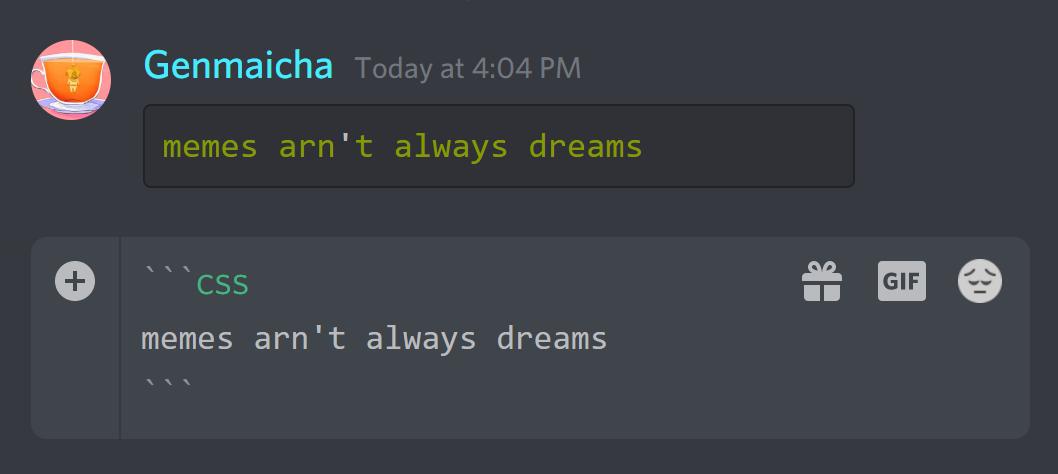
#Rmarkdown italics code
Use echo=FALSE to avoid having the code itself shown.There are a variety of options to affect how the code chunks are treated. And note the little question mark next to it click the question mark and you’ll get a “Markdown Quick Reference” (with the Markdown syntax) as well to the RStudio documentation on R Markdown. You compile the R Markdown document to an html webpage by clicking the “Knit HTML” in the upper-left. You can make section headers of different sizes by initiating a line with some number of # symbols: # Title


You can use the same number over and over if you want: 1. You can make a numbered list by just using numbers. (I prefer hyphens over asterisks, myself.) Or like this: - bold with double-asterisks You can make a bulleted list by writing a list with hyphens or asterisks, like this: * bold with double-asterisks You make things bold using two asterisks, like this: **bold**, and you make things italics by using underscores, like this: _italics_. The marked-up text gets converted to html, replacing the marks with the proper html code.įor now, let’s delete all of the stuff that’s there and write a bit of markdown. Just click on the “Publish” button in the HTML view.Markdown is a system for writing web pages by marking up the text much as you would in an email rather than writing html code. RStudio also provides you with the option to publish the document online on the RPubs website. The HTML file is self-contained, including all images, so it’s easy to publish it on a web page or share it with people. Rmd), RStudio will automatically save the generated HTML file in the same location, with the same name and suffix. If you have previously stored your R Markdown file somewhere on your harddisk (with suffix.

To convert the file into HTML, simply click on the “Knit HTML” button. Accept the default settings, and R Studio will generate a new R Markdown file with a few lines of example content. To create an R Markdown document in RStudio, all you have to do is go to File, New File, and then select R Markdown. When you convert the R Markdown file to HTML, the R code gets executed, the R output captured and inserted into the document, and you’ve got everything nicely together, with very little work. An R code block could look something like this: ``` R Markdown works the same, only that it adds the option to insert R code blocks. We can make text bold, italics, or look like code. To give you an example, this is Markdown text: We can make text **bold**, *italics*, or `look like code.`

If you have ever edited a wikipedia article, you have used Markdown. It consists of plain text with a few simple directives to mark sections, turn text bold or italics, or insert quotes. What does the word Markdown stand for? Markdown is a minimalist approach to writing strutured documents. To give you an example, I started writing a tutorial for R’s ggplot2 library this weekend, and the original R Markdown file as well as the HTML output generated from that file are available here. In the case of R, this means that you can write a document that contains R code, the output that is generated when the R code is run (including graphs), and prose describing the R code and its output. Literate programming, invented by Donald Knuth, allows users to write both a program and a document describing the program, at the same time. R Markdown provides a literate programming platform for the R language. So if you use R, and you’ve never used R Markdown, give it a try. I wager that anybody who has RStudio installed can create a useful document in 30 minutes or less. R Markdown rocks! It’s hands down the easiest and most elegant method to creating rich documents that contain data analysis, figures, mathematical formulas, and text. I had been aware of its existence for a while, but I had never bothered to check it out. This weekend, I finally spent some time learning R Markdown.


 0 kommentar(er)
0 kommentar(er)
